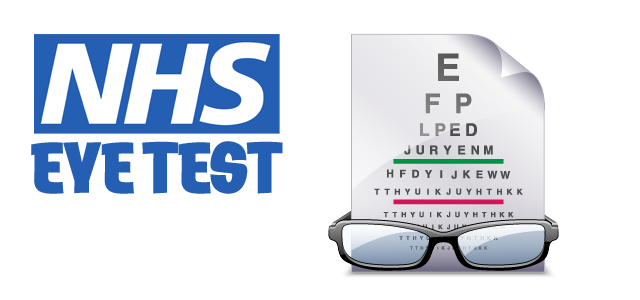![]()
Jack Brown Eyecare, Edinburgh Opticians.
Email: info@jbeyecare.com
Jack Brown Eyecare Branches
30 Elder Street, Edinburgh EH1 3DX
Tel: 0131 557 3531
Open in Google Maps
Westside Plaza, Edinburgh EH14 2SW
Tel: 0131 442 2333
Open in Google Maps

What is nystagmus?
Nystagmus is an involuntary movement of the eyes - usually from side to side, but sometimes the eyes oscillate up and down or even in a circular motion. Most people with nystagmus have vision which is much worse than average - well below what is considered to be short sighted. Many people can register as partially sighted and a small number can register as blind.
Who is affected?
Nystagmus that appears in the first six months of life is called 'early onset nystagmus', or 'congenital' or 'infantile nystagmus'. The condition may also develop later in life when the term 'acquired nystagmus' is used.
What causes nystagmus?
Nystagmus in early childhood may be caused by a defect in the eye or the visual pathway from the eye to the brain. It occurs in a wide range of eye disorders of childhood such as cataract, glaucoma, some disorders of the retina and albinism. It may also be found in children who have multiple disabilities such as Down's Syndrome.
Many children with nystagmus have no eye, brain or other health problems. In this case the condition is called 'congenital idiopathic nystagmus', or 'idiopathic infantile nystagmus', meaning that the condition is observed, or starts, early in life and the cause is unknown. Several types of nystagmus can be inherited. To find out the chances of someone passing on nystagmus to the next generation, a specialist must first make an accurate diagnosis of the underlying condition. It may then be necessary to consult a clinical geneticist for detailed information and counselling.
Acquired nystagmus that develops later in life may be a symptom of another condition such as a stroke, multiple sclerosis or even a blow to the head. There are many other causes. Nystagmus is not infectious or contagious. Because nystagmus may be the first sign of a serious disorder of the eye or brain, it is vital that when nystagmus first develops the child or adult is referred to an ophthalmologist (eye specialist) or a neurologist.
How common is the condition?
This is not known accurately, but nystagmus is believed to affect around 1 in 1,000 individuals.
How does nystagmus affect people?
Nystagmus affects people in many ways and the effects vary from person to person.
- 1. Most people who have had the condition since childhood do not suffer from a constantly moving image (known as 'oscillopsia') most of the time, as their brains adapt to the movement of the eyes. However, people who acquire nystagmus in later life are unlikely to adjust so well and will suffer much more from the effects of oscillopsia.
- 2. Nystagmus often seriously reduces vision. The degree of sight loss varies from person to person and is also related to the underlying condition. Many sufferers are eligible to be registered as partially sighted or blind. Please note that most people registered blind have poor vision, not no sight at all.
- 3. Vision varies during the day and is likely to be affected by emotional and physical factors such as stress, tiredness, nervousness or unfamiliar surroundings. Nystagmus sufferers may tire more easily than other people because of the extra effort involved in looking at things.
- 4. Many people with nystagmus can read very small print if it is close enough to their eyes. Some find a visual aid such as a magnifier helpful. However, large print material should always be made available and all written matter should be clear. It is very difficult to share a book because it will probably be too far away or at the wrong angle.
- 5. People with nystagmus may be slow readers because of the extra time needed to scan. This should not be taken as a sign of poor reading ability, but students or school children with nystagmus may need extra time when they are sitting exams.
- 6. Many people with nystagmus use computers, as they can position screens to suit their own needs and adjust brightness, character size, and so on. However, some people find it difficult to read computer screens for more than a few minutes. Experimenting with colour combinations and using large screens may help.
- 7. The angle of vision is important. Many sufferers have a 'null point' where the eye movement is reduced and vision is improved. They will often turn their head to one side to make the best use of their vision. Sitting to one side of a screen or blackboard often helps. Children with nystagmus should be allowed to adopt the head posture which gives them the best vision.
- 8. Head nodding sometimes helps concentration, probably because the head movement compensates somewhat for the eye movement.
- 9. Depth perception is usually considerably reduced. This may sometimes make people seem a little slower or clumsier than normal.
- 10. Balance may be affected, possibly because of poor depth perception, which may make it difficult to use stairs or cross uneven surfaces.
- 11. Confidence may be reduced because of poor vision, and maintaining eye contact may be difficult.
- 12. Getting about can also be affected, especially in unfamiliar and busy surroundings such as supermarkets, airports and railway stations. Crossing roads is more dangerous than for a fully sighted person. Mobility training can help. Few people with nystagmus are legally able to drive a car.
What treatment is available?
Nystagmus cannot be cured, but there are several treatments that can help. Glasses and contact lenses do not correct nystagmus, although they may help a little and should certainly be worn to correct other sight problems.
A child or adult may be diagnosed as being 'short sighted' or 'long sighted' as well as having nystagmus. Long or short sightedness occurs because the eye itself is not exactly the right shape for focusing. The focusing problems can be corrected with glasses or contact lenses, but the nystagmus will still affect the sufferer's eyesight. Being long sighted does NOT mean that a nystagmus sufferer has good distance vision. Ask your ophthalmologist or optometrist (optician) to explain more.
Very occasionally, surgery is performed to alter the position of the muscles that move the eye. The purpose of this is to reduce the head tilt. Medical researchers have explored ways of trying to reduce the nystagmus by making the patient aware of the eye movement and encouraging them to control it. These techniques rely on visual or audio signals (known as bio-feedback) to the patient. For example, the patient might listen to an electronic signal that goes higher when the eye movement is greater. Some people have said that they benefit from this type of treatment. However, the evidence is not conclusive and many questions remain unanswered such as: 'Do any possible benefits last?'
Interest in nystagmus among vision scientists is growing. However, a lot of basic research is needed to understand the condition better and progress is likely to be measured in decades rather than years.
The good news Nystagmus is not painful and does not lead to total blindness. Vision tends to improve until it stabilises around the age of five or six. Giving children plenty of stimulation in the early years does seem to help them make best use of the vision they have. Toys that encourage the child to follow a moving subject, such as marbles or train sets, are helpful. So are games that are designed to develop hand-to-eye co-ordination.
It is not possible to say which type of school is best for the child with nystagmus - each child has his/her special requirements. However, most children with nystagmus go to mainstream schools. Many go on to college and most adults' lead fulfilled, independent lives.
How can the effects be minimised?
Much can be done to reduce the effects of nystagmus and make sure that people with the condition have the same access to the same opportunities as fully sighted people.
Accurate information and support, during the early years in particular, can and do make a big difference. In the worst cases, without a clear explanation of the effects of nystagmus, some children are mistakenly thought to have learning difficulties. This means that the real problems due to their poor vision are not addressed. With the support of teachers trained in visual impairment, an understanding school and the help of parents, most of the difficulties presented by nystagmus can be overcome.
Where can I get information?
People with nystagmus sometimes feel isolated or lonely because they find it difficult to explain what is wrong with them, and their families, friends and colleagues do not understand the condition. Help may also be needed with practical issues such as benefit entitlements, access to work schemes or computer systems specially adapted for visually impaired people. Such support and information is available from the Nystagmus Network (formerly Nystagmus Action Group), Royal National Institute for the Blind and other organisations. Contact either of these organisations about details of other groups.
Glossary
Albinism - Albinism is the name given to a group of inherited conditions in which there is a lack of pigmentation (colour in the eyes and usually in the skin and hair as well). This causes most people with albinism to have a very fair, almost white, appearance, although in some people albinism affects the eyes only. People with albinism find their greatest problems arise on sunny days and in brightly lit environments. Virtually everyone with albinism has nystagmus.
Cone dystrophy - Cone dystrophy is an impairment to vision which can be caused by any one of a number of eye disorders. These disorders may or may not be inherited. Some dystrophies appear later in life, sometimes as late as 50. Other types may appear in early childhood or even be present at birth. Cone dystrophy may cause problems with seeing in bright light, seeing detail and seeing colours.
Childhood (or 'juvenile') cataract - Cataract is a clouding of the lens of the eye which causes sight to become blurred or dim, because light cannot pass thorough to the back of the eye. Not all cataracts impair sight so badly that an operation is required. Some babies are born with cataracts and some develop them later in childhood. Childhood cataract may be inherited or may be caused by injury or illness; however, in some cases the cause cannot be identified.
Down's Syndrome - Down's Syndrome is a genetic condition caused by the presence of an extra chromosome. People with Down's Syndrome have 47 chromosomes instead of the usual 46. It is amongst the most common forms of learning disability (mental handicap). Nystagmus is a common side effect of Down's Syndrome.
About Nystagmus Network
The Nystagmus Network (NN) provides support and information to anyone affected by the eye condition nystagmus. We help families, especially parents of newly diagnosed children, by explaining the effects of nystagmus and how to minimise them.
We have a telephone helpline (029 2045 4242 or 0845 634 2630), a quarterly newsletter, information sheets and books about nystagmus, including two written for children.
We work with other charities, hospitals, schools and social services and provide training in what it is like to have nystagmus. We support research into nystagmus and have organised two international research workshops looking at the causes and genetics of nystagmus, its impact on daily life, diagnosis and possible treatments. NN is a registered charity (803440).
Contact Information
John Sanders
Information and Development Manager
Telephone: 029 2045 4242 or 0845 634 2630
Email: john.sanders@nystagmusnet.org
Telephone Helpline: 0845 634 2630
Website: www.nystagmusnet.org
![]() Twitter: twitter.com/press_nystagmus and twitter.com/nullpoint15
Twitter: twitter.com/press_nystagmus and twitter.com/nullpoint15
![]() Facebook: http://www.facebook.com/pages/Nystagmus-Network/216838805015328
Facebook: http://www.facebook.com/pages/Nystagmus-Network/216838805015328
text size >












